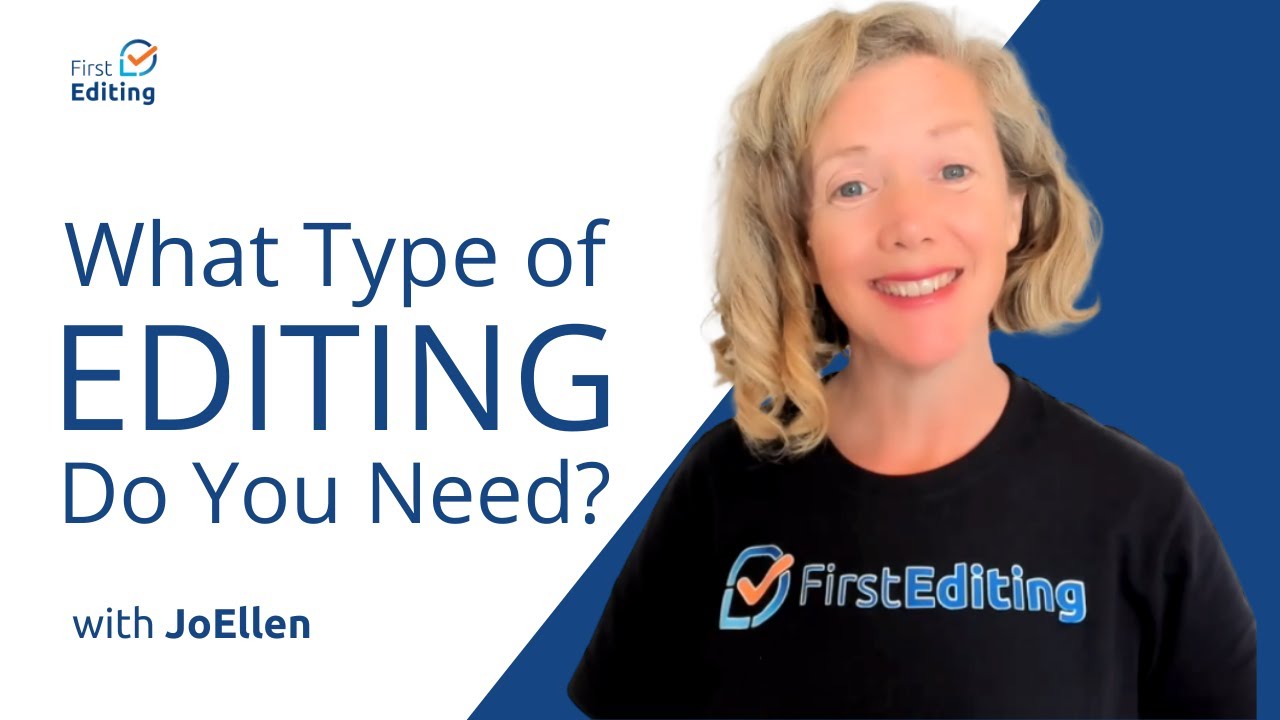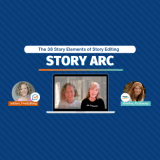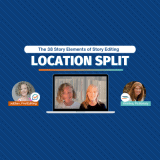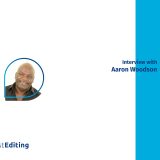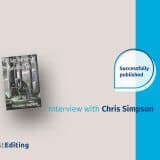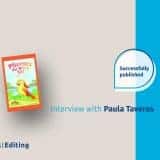

Congratulations, you’ve written your book!
Now it’s time to take a step back from the story and write about yourself. Yes, that’s right. Every book, be it fiction or non-fiction, usually includes an author bio.
And if you have a website, a social media account, or if you’re sending out a book press release, all the more reasons to craft a compelling, unique bio that shows the world who you are.
There are two things your readers know about you from the get-go – that you love writing and that your name is [insert]. Chances are, you’re also a huge bookworm.
But the “about the author” section goes in more depth. It reveals some personal information, your past successes, and even fun anecdotes. It demonstrates what you’re all about beyond this one book.
Let’s have a look at which “about the author” examples you can learn from and what tips you should keep in mind when crafting your “hi, this is me!” section.
Why Is an Author Bio So Important?
Unless you’re already a famous celebrity or a well-established author, most readers won’t know who you are when buying your book. Therefore, “about the author” is your chance at an excellent first impression.
Of course, the actual content of your book usually counts for more than a small section at the back that says you love dogs – but it’s precisely this section that pulls your story out of the fictional world and into the real one.
Knowing who wrote the words you’re reading can make a huge impact on the reading experience because it creates more of a personal bond between the author and the reader.
If you’re a non-fiction author, your bio is all the more important because you should ideally have a certain authority on the topic you’re tackling in your work.
For example, as far as mental health is concerned, an expert with a Ph.D. in psychology will garner more respect – and therefore more potential sales – than a lawyer who feels a bit stressed from time to time. This impacts not only your reach but also your publishing chances if you’re going down the traditional route.
RELATED READ: Do I Need to Copyright My Book Before Publishing?
Best Tips for Writing Your “About the Author” Section
First things first – are you a fiction or a non-fiction author?
If it’s the latter, aim to:
- Include all relevant credentials that explain why people should listen to you when it comes to this subject
- Provide a little bit of backstory that shows how you got where you are (this makes your book more personal)
Remember: Don’t be afraid to use humour and wit to your advantage – it’s what often keeps people reading!
While fiction authors get a little bit of a break – your fictional story is what matters most – your bio should still be the best it can possibly be. After all, who you are as a writer and a person is what often gets people to follow you on social media and keep up with your latest books.
Include some personal information, talk about your hobbies, or mention what inspired you to write your story down. We’ll get into the nitty-gritty of this in the next section.
Last but not least, remember that each “about the author” section should be between 50 and 150 words.
RELATED READ: Three Secrets for a Killer Book Cover Design
“About the Author” Examples to Follow
Let’s start with three fiction authors:
Lucy Foley, The Guest List
“Lucy Foley is the No.1 Sunday Times and the Irish Times bestselling author of The Hunting Party. The idea for her latest book was sparked by a trip to Connemara, where half of Lucy’s family hail from, on the west coast of Ireland. Struck by the rugged beauty of the islands off its shores – the perfect setting for a wedding, yet dangerously cut-off – Lucy began to plot a new murder mystery. An island with no escape, people reuniting, emotions running high. And so The Guest List came to life.
Previously a fiction editor in the publishing industry, Lucy now writes full-time. Her novels have been translated into nineteen languages and her journalism has appeared in publications such as Sunday Times Style, Grazia, ES Magazine, Vogue US, Elle, Tatler, and Marie Claire.”
This “about the author” example:
- Begins with Foley’s biggest accomplishment in the publishing world
- Elaborates in-depth on what inspired Foley to write The Guest List
- Uses literary and poetic language to describe the process of finding her idea (“an island with no escape, people reuniting, emotions running high. And so The Guest List came to life”)
- Cycles back to Foley’s accomplishments in the field of journalism and publishing
Bridget Collins, The Binding
“Bridget Collins trained as an actor at the London Academy of Music and Dramatic Art after reading English at King’s College, Cambridge. She is the author of seven acclaimed books for young adults and has had two plays produced, one at the Edinburgh Fringe Festival. The Binding is her first adult novel.”
This “about the author” example:
- Is short and crisp
- Focuses primarily on Collins’s education since it’s relevant to the field
- Highlights Collins’s other literary pursuits (seven young adult books and two plays)
- Describes Collins’s link to a well-respected UK theatre festival
- Briefly states The Binding is her first adult novel
TJ Klune, Under the Whispering Door
“TJ Klune is the New York Times and USA Today bestselling, Lambda Literary Award-winning author of The House in the Cerulean Sea, The Extraordinaries and more. Being queer himself, TJ believes it’s important – now more than ever – to have accurate, positive, queer representation in stories. You can find out more at tjklunebooks.com.”
This “about the author” example:
- Starts off with Klune’s biggest accomplishments in publishing
- Mentions an award Klune has won
- Names two other popular works by Klune so that readers who have read these books easily recognize him
- Talks about a specific topic (queerness) and why it’s relevant in Klune’s writing
- Refers the reader to his website
And as for non-fiction authors…
James Clear, Atomic Habits + His Website
“James Clear is a writer and speaker focused on habits, decision-making, and continuous improvement. He is the author of the #1 New York Times bestseller, Atomic Habits. The book has sold over 10 million copies worldwide and has been translated into more than 50 languages.
Clear is a regular speaker at Fortune 500 companies and his work has been featured in places like Time magazine, the New York Times, the Wall Street Journal and on CBS This Morning. His popular “3-2-1” email newsletter is sent out each week to more than 2 million subscribers.”
This “about the author” example:
- Describes the accomplishments of not only Clear but also Atomic Habits itself
- Dives into what Clear does professionally alongside writing, giving him more credibility
- Names well-established journals he has been featured in, also boosting his credibility
- Mentions a newsletter readers can subscribe to
Maria Tatar, The Classic Fairy Tales
“Maria Tatar is the John. L. Loeb Professor of Germanic Languages and Literatures and Folklore and Mythology at Harvard University. She is the author of Enchanted Hunters: The Power of Stories in Childhood, Off with Their Heads! Fairy Tales and the Culture of Childhood, and many other books on folklore and fairy tales. She is also the editor and translator of The Annotated Hans Christian Andersen, The Annotated Brothers Grimm, The Annotated Classic Fairy Tales, The Annotated Peter Pan, and The Grimm Reader.”
This “about the author” example:
- Gives an extensive overview of Tatar’s other academic works
- Provides Tatar’s academic background on the subject, which gives her authority since The Classic Fairy Tales is an academic book
Conclusion
As you can see, every author’s bio is unique in its own way, depending on the subject, the author’s background, and their personality.
However, all bios have one thing in common – they highlight your past literary (or journalist) accomplishments.
If you’re just starting out, don’t worry, though! Include more personal information, share your hobbies, or talk about your inspiration.
What matters most is that your “about the author” section captures you in the best way it can.





